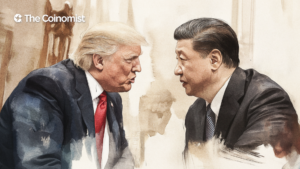What Is OI? A Beginner’s Overview

This guide explains open interest, a key metric in trading. Learn what OI is, how it works, and why it matters in futures, options, and crypto markets.
On this page
- What Is OI (Open Interest)?
- How Does Open Interest Work?
- Significance of Open Interest in Trading
- OI in Futures and Options Markets
- Open Interest vs. Volume
- How to Use Open Interest in Trading?
- OI in Crypto Markets
- Open Interest as Metric
- Frequently Asked Questions (FAQs)
- What is a high OI?
- What does "OI" mean in investing?
- How to check OI in crypto?
- What does OI mean in pricing?
In the world of finance and investing, OI (Open Interest) plays a pivotal role. Understanding OI is crucial for investors, traders, and anyone involved in markets, as it provides valuable insights into market sentiment, liquidity, and price action. Whether you are a seasoned investor or a beginner looking to explore the dynamics of financial markets, grasping the concept of OI can help in making more informed decisions. This article will guide you through the concept of OI, how it works, and its significance in various markets.
What Is OI (Open Interest)?
Open Interest (OI) refers to the total number of outstanding contracts (such as options or futures contracts) that have not been settled or closed. In simple terms, it represents the number of contracts that are open and still active in the market. OI is commonly associated with options and futures markets, but it can also be observed in other asset classes where contracts are traded. OI provides traders and investors with valuable information regarding market trends, potential price movements, and liquidity.
When a trader enters into a new contract, it increases the open interest. Similarly, when a contract is closed, the open interest decreases. Open interest can be used to gauge the strength or weakness of a trend and to assess market sentiment.
How Does Open Interest Work?
To understand how OI works, it's essential to know how it relates to trades in the market. When a new futures or options contract is initiated, it adds to the open interest. If a buyer and a seller create a contract, the open interest increases by one contract. However, if the buyer sells the contract to close the position, or if the contract expires, the open interest decreases.
For example, if two traders enter into a new futures contract (one buys and one sells), it increases the open interest by one contract. If one of those traders closes their position (selling the contract or buying it back), the open interest will decrease by one contract.
OI is typically reported on a daily basis by exchanges, and it is a valuable metric for understanding market dynamics. High OI usually indicates high market activity and interest, while low OI can signify lower trading volume or less market interest.
Significance of Open Interest in Trading
Understanding open interest is crucial because it can help traders and investors analyze the health of a trend and make predictions about future price movements. Here's how OI can be used in different market scenarios:
- Rising Open Interest: When OI increases along with price movement (whether up or down), it generally indicates that the trend is strong. More contracts being opened suggests more participation in the market, and this influx of activity can push prices in the direction of the prevailing trend.
- Declining Open Interest: If OI decreases while the price is moving in one direction, it can signal that the trend is losing momentum. In this case, traders may begin closing their positions, and fewer participants are willing to enter the market, indicating a potential reversal or slowdown.
- Stable Open Interest: If OI remains steady while the price fluctuates, it may suggest that there is no strong trend and the market is in a consolidation phase. In this scenario, traders are waiting for a breakout or a clear direction to make their moves.
- Open Interest and Liquidity: High OI typically signals a high level of liquidity in the market, meaning that it is easier to enter and exit trades without impacting the price too much. Low OI can suggest that liquidity is thin, making it harder for traders to execute large orders without causing significant price fluctuations.
- OI in Short Squeeze and Long Squeeze Scenarios: OI can also play a key role in predicting market events like short squeezes or long squeezes. A short squeeze occurs when a heavily shorted asset’s price rises quickly, forcing short sellers to cover their positions, which adds further upward pressure on the price. A long squeeze happens when the price falls rapidly, and long holders are forced to sell to cut their losses, exacerbating the decline. Open interest can help identify when these scenarios might unfold, as high OI in one direction can lead to significant price movements if a squeeze occurs.
OI in Futures and Options Markets
Open Interest is particularly useful in futures and options markets, where contracts are traded with a predetermined expiration date. In these markets, OI can be used to gauge the overall market sentiment and help traders decide when to enter or exit positions.
- Futures Market: In the futures market, OI is commonly used to assess the overall strength of the market trend. When open interest is rising along with the price of the underlying asset, it signals that traders are betting on further price movement. Conversely, if the price of the asset is falling while OI is rising, it might indicate that traders are expecting further declines.
- Options Market: In the options market, OI can also provide insights into market sentiment. A rise in OI in options contracts suggests that there is growing interest in the underlying asset, and traders may expect significant price movements. Additionally, OI can be used to gauge the level of risk in the options market. High OI in a specific strike price can indicate that many traders are betting on a certain outcome, leading to potential volatility.
Open Interest vs. Volume
It’s essential to differentiate between Open Interest (OI) and volume. While both metrics are useful, they offer different insights:
- Volume refers to the total number of contracts that have been traded during a given time period (such as a day). It indicates the level of trading activity and liquidity in the market. High volume typically correlates with increased participation and can signal upcoming price movements.
- Open Interest, on the other hand, refers to the total number of outstanding contracts that have not been closed. It provides insight into market sentiment and trend strength over time. While volume can give an indication of short-term activity, OI offers a more long-term view of market behavior.
How to Use Open Interest in Trading?
Traders use OI in conjunction with price charts and technical indicators to make more informed decisions. Here’s how you can use open interest:
- Confirm Trend Strength: If OI is increasing alongside a price increase, it confirms that the trend is strong. If OI is increasing with a price decrease, it can confirm that the downward trend is gaining momentum.
- Spot Potential Reversals: When price moves in one direction but OI is declining, it can signal that the current trend is losing strength, and a reversal may be imminent.
- Identify Market Sentiment: A sudden increase in OI could indicate that market participants are expecting volatility, while a drop in OI may indicate that traders are exiting positions and expecting less volatility.
OI in Crypto Markets
In cryptocurrency markets, OI is becoming an increasingly popular metric, especially in derivatives trading (such as crypto futures and options). OI helps crypto traders gauge the level of market participation and sentiment around a particular asset, just like in traditional financial markets.
In the volatile world of crypto, OI can offer insights into upcoming price movements. For example, if OI is rising in a Bitcoin futures market, it suggests that more traders are entering the market and betting on further price movements. Conversely, declining OI might indicate that traders are exiting their positions or that market participants are unsure of the asset’s future direction.
Open Interest as Metric
Open Interest (OI) is a crucial metric for understanding market sentiment, assessing trend strength, and predicting future price movements in various financial markets, including futures, options, and cryptocurrencies. Whether you're an experienced trader or a beginner, understanding how to interpret OI can provide valuable insights into market dynamics and help inform your trading strategies. By monitoring changes in open interest alongside other technical indicators, you can make more informed decisions about your investments and potentially enhance your market returns.
Frequently Asked Questions (FAQs)
What is a high OI?
A high OI typically indicates that there is a large amount of open contracts in the market, signaling that there is significant interest in the asset. It suggests that the market is active and there is high liquidity, which could result in strong price movements.
What does “OI” mean in investing?
In investing, OI stands for Open Interest. It refers to the total number of open contracts (futures or options) in the market that have not been closed or settled. It provides insight into the level of activity, sentiment, and potential price movements.
How to check OI in crypto?
To check OI in the crypto market, you can use platforms that offer cryptocurrency futures and options data. Most major exchanges like Binance, Kraken, and BitMEX provide OI data for various cryptocurrency contracts. This data can typically be found in the market information or analytics section of the exchange.
What does OI mean in pricing?
In pricing, OI can reflect the level of market interest in a particular asset. High OI can indicate that many traders are involved in the market, potentially signaling greater price volatility, while low OI may suggest less market activity and lower price movements.
The content on The Coinomist is for informational purposes only and should not be interpreted as financial advice. While we strive to provide accurate and up-to-date information, we do not guarantee the accuracy, completeness, or reliability of any content. Neither we accept liability for any errors or omissions in the information provided or for any financial losses incurred as a result of relying on this information. Actions based on this content are at your own risk. Always do your own research and consult a professional. See our Terms, Privacy Policy, and Disclaimers for more details.























